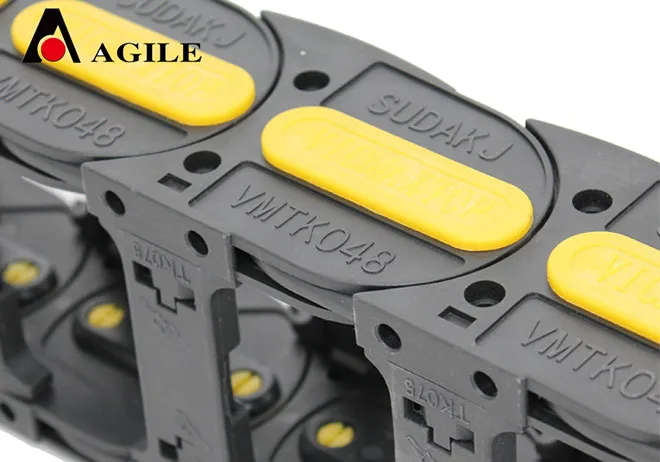open cable carrier
Understanding Open Cable Carrier Systems
Open cable carrier systems have revolutionized the way industries manage cables and hoses in various applications, significantly improving efficiency and safety. These systems are commonly used in manufacturing, automation, and robotics, showcasing their versatility and reliability across a vast array of environments.
What is an Open Cable Carrier?
An open cable carrier, also known as an energy chain or drag chain, is a type of conduit used to guide and protect moving cables, hoses, and other flexible lines. Unlike traditional closed carriers, open cable carriers feature a design that allows for easy access and maintenance. This design not only facilitates cable installation and replacement but also minimizes downtime in operations—an essential factor in high-paced industries.
Key Features and Benefits
One of the prominent advantages of open cable carriers is their modular design. Manufacturers can customize these systems according to specific application requirements. Their lightweight yet robust construction ensures that they can withstand the stresses of motion, making them suitable for various moving applications. Whether it is linear motion, rotary systems, or multi-dimensional movements, open cable carriers can accommodate all.
Additionally, these systems are highly adaptable. They can be used in numerous environments, from factory floors to outdoor settings, thanks to materials that are resistant to wear, UV light, and extreme temperatures. This durability extends the lifespan of both the carrier itself and the cables it protects, reducing long-term maintenance costs and enhancing operational reliability.
Applications of Open Cable Carriers
open cable carrier

The applications of open cable carriers are vast. In manufacturing, they are often found in conveyor systems, machine tools, and assembly lines, where smooth movement of cables and hoses is critical. In the realm of robotics, these systems facilitate the free movement of robotic arms, ensuring a clean and efficient line of movement without tangling or wear.
Moreover, open cable carriers are also prevalent in the aerospace and automotive industries. They are used in testing equipment, assembly lines, and aircraft designs where space and flexibility are paramount. The ability to easily access the cables also makes troubleshooting and repairs far more manageable, minimizing operational disruptions.
Considerations for Selection
When selecting an open cable carrier system, several factors come into play. The first consideration is the application environment. Assessing factors such as temperature fluctuations, exposure to chemicals, and dust accumulation can significantly influence the choice of material and design.
Moreover, understanding the movement characteristics is crucial. Evaluating the types of motion—linear, curved, or vertical—will dictate the specific carrier design needed. Additionally, it’s important to consider the size and weight of the cables or hoses that will be housed within the carrier to ensure that it can support the load without failure.
Conclusion
Open cable carriers play a critical role in enhancing operational efficiency across numerous industries. Their innovative design, adaptability, and ease of maintenance make them a go-to solution for managing cables and hoses in motion. As technology advances and industries evolve, the importance of effective cable management systems like open cable carriers will continue to grow, ensuring seamless operations and boosting productivity in various sectors. By understanding their function and applications, organizations can make informed decisions that enhance their operational capacities while reducing costs and maintenance efforts.








